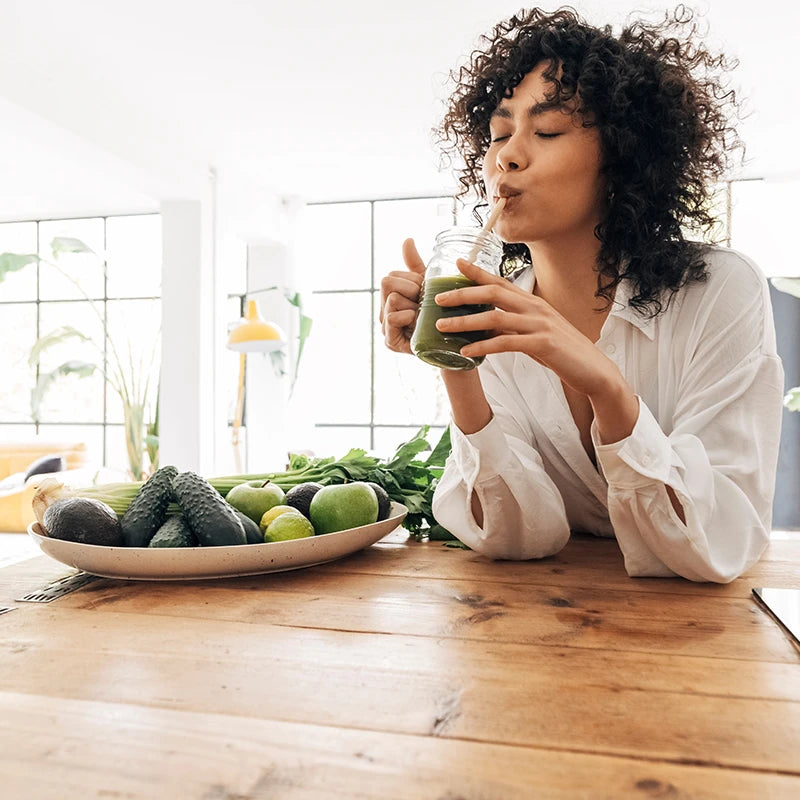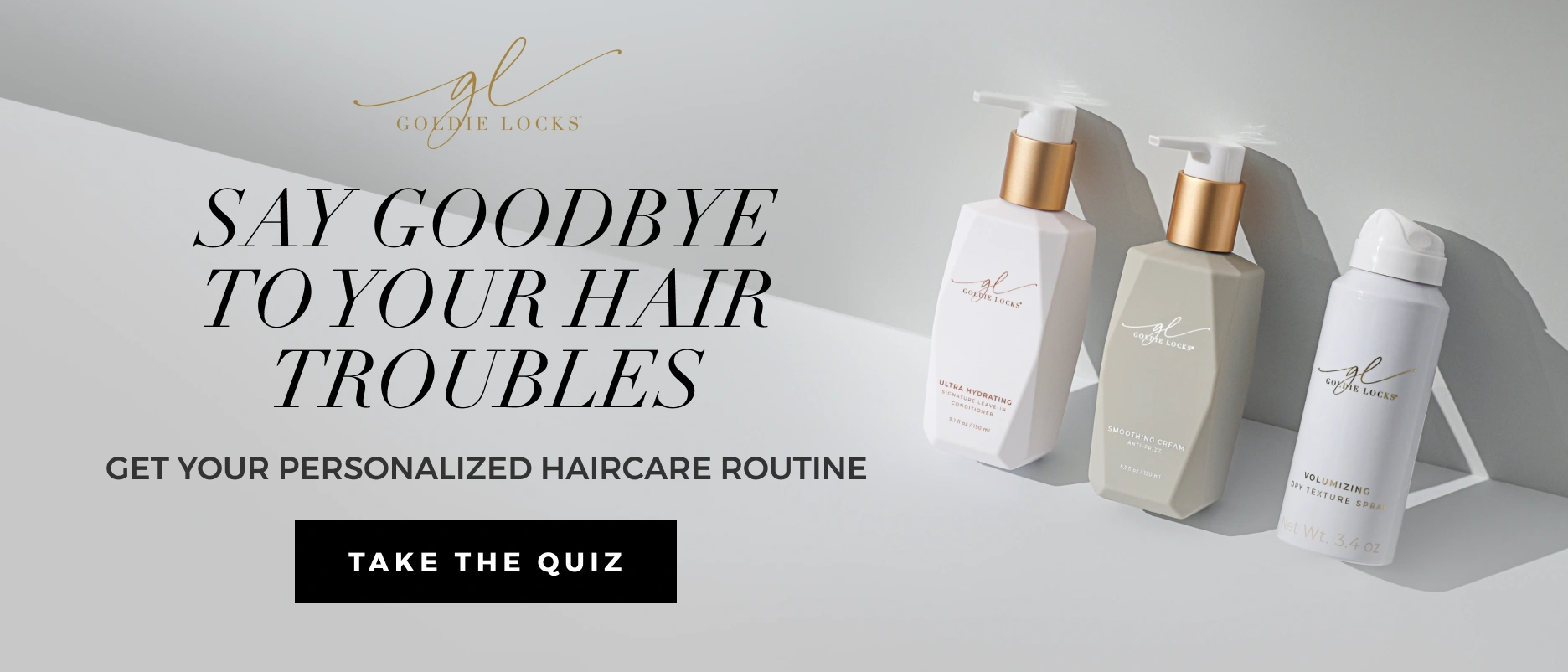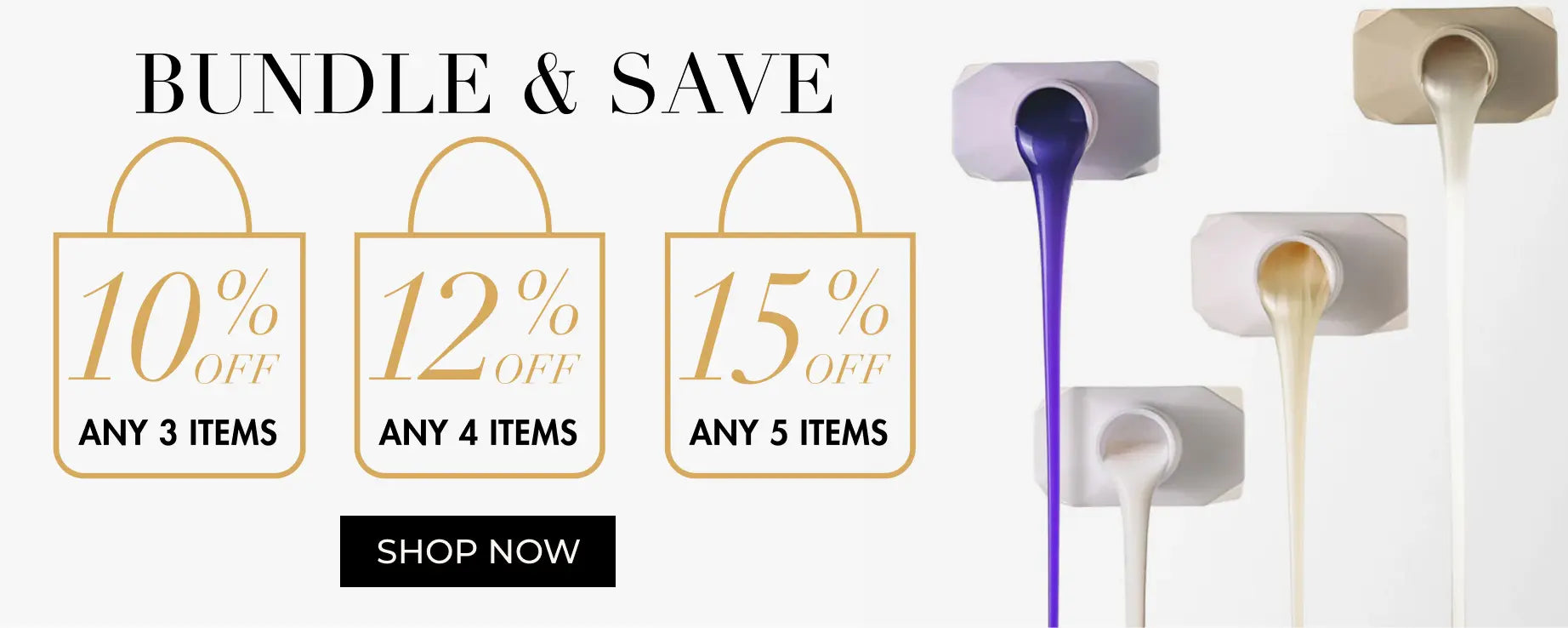Greasy hair is something we all experience from time to time. But when you’re investing in quality products and regular salon visits, yet still can’t identify what’s holding your hair back, it can become increasingly frustrating.
Excess oil can be triggered by a variety of factors, including scalp health, daily habits, and the products you’re using (or perhaps misusing).
Read on to uncover what might be contributing to the buildup, and explore thoughtful tips to help your hair feel fresher, longer.
The Science Behind Greasy Hair

The primary source of greasy hair is sebum, an oily, waxy substance produced by the sebaceous glands connected to your hair follicles. Sebum plays an important role: it moisturizes the scalp and strands, helps protect the skin’s barrier from environmental stressors, and prevents hair from becoming dry or brittle.
However, some scalps produce excess sebum due to internal factors like genetics or hormones, or external triggers such as stress, diet, unsuitable hair products, or improper hair care routines.
Common Triggers That Make Hair Greasy Fast

Overwashing or Underwashing
Finding the right wash routine is key. Not washing often enough can lead to noticeable oil buildup, but washing too frequently can also backfire. Overwashing strips your scalp of its natural oils, which may trigger it to produce even more oil in response.
Heavy or Inappropriate Hair Products
Using products that are too heavy or simply not suited to your hair type, can disrupt your scalp’s natural balance and lead to excess oil. Because not all formulas are created equal, consider speaking with your stylist about what’s best for your hair.
When in doubt, reach for a gentle, sulfate-free option such as Goldie Locks® Signature Shampoo to support oil control without over-drying.
Routine Mistakes
-
Touching your Hair Too Often: Frequently running your fingers through your hair can transfer oil and dirt from your hands to your strands, causing them to look greasy more quickly.
-
Product Buildup: Over time, styling products can accumulate on your scalp and strands, leading to oiliness and dullness. To reset, use a clarifying shampoo like Goldie Locks® Clarifying Shampoo to deeply cleanse the scalp and remove stubborn buildup.
-
Dirty Linens: Pillowcases can harbor residue from skincare, makeup, sweat, and natural oils, all of which can transfer back onto your hair. Wash your pillowcases at least once a week, and consider switching to a silk pillowcase to minimize friction, frizz, and oil transfer overnight.
-
Using a Dirty Hand Brush: Your hairbrush collects more than just loose strands, it can also trap oil, dust, and product residue. Clean your brushes regularly to avoid reintroducing buildup to freshly washed hair and scalp.
-
Not Rinsing Properly: Incomplete rinsing leaves traces of shampoo or conditioner behind, which can mix with natural oils and cause unwanted buildup. Take your time to rinse thoroughly, especially near the roots, to help keep your hair feeling clean and light.
Hormonal Changes
Hormones play a significant role in the health of your scalp and the appearance of your hair. Fluctuations, especially during your menstrual cycle, can lead to increased sebum production, which may leave your hair looking oily more quickly than usual.
Stress
Stress not only affects your mood, it can also impact your hair. Elevated stress levels trigger the release of hormones like cortisol, which can stimulate excess oil production on the scalp. As a result, your hair may appear greasy sooner than expected, even when your routine hasn’t changed.
Hair Types & Greasiness: How Texture Impacts Oiliness

Hair texture plays a key role in how oil is distributed and how quickly it becomes noticeable. Since each hair type responds differently, understanding your texture can help you take a more thoughtful, tailored approach to managing greasiness.
Curly Hair & Root Buildup
In curly hair, natural oils have a harder time traveling down the length of the strand. This often results in an oily scalp, while the mid-lengths and ends remain dry.
Curly hair typically benefits from a balanced routine, one that nourishes the ends without overloading the roots, to avoid buildup while maintaining softness and definition.
Fine Hair & Quick Oil Spread
Fine hair tends to show oil more quickly. Because the strands are thinner and lie closer to the scalp, sebum travels down the shaft more easily, creating a greasy appearance sooner, particularly in humid weather or during periods of stress.
Gentle cleansing and lightweight products are key to maintaining volume and freshness.
Thick Hair & Scalp Overcompensation
Thicker strands naturally hold more moisture and are slower to show oil. However, the scalp may produce extra sebum in an effort to keep the density hydrated.
As a result, oil may accumulate at the roots and weigh the hair down, even if the rest of the strand remains relatively dry. Consistent cleansing and scalp care can help keep things balanced.
Greasiness by Area: Why Just the Top Gets Oily

Sebaceous (oil) glands are responsible for producing sebum, a natural substance that keeps both the scalp and hair moisturized.
The highest concentration of these glands is found on the scalp, which is why oiliness tends to appear there first.
Because sebum takes time to travel down the hair shaft, it typically builds up at the roots, while the mid-lengths and ends remain noticeably drier.
Certain hairstyles and accessories can also affect how and where oil accumulates:
Tight Hairstyles
Wearing your hair in tight ponytails, buns, or braids can trap oil and sweat close to the scalp. This prevents sebum from distributing evenly, leading to buildup at the roots.
Hats, Headbands, and Scarves
Headgear can create warmth and friction at the scalp, encouraging sweat and stimulating oil production. This added pressure can push sebum from the glands more quickly, making your hair feel greasier, especially at the crown.
Itchy, Greasy, or Flaky? When It’s More Than Just Oil

If you’re noticing oiliness alongside irritation or flaking, it may be more than just greasy hair. When excess oil and dandruff occur together, another underlying issue could be at play.
Look for signs like redness, persistent itching, and yellowish flakes, these may point to seborrheic dermatitis, a common scalp condition that requires professional attention. If you suspect this, it’s best to consult a dermatologist for proper care.
On the other hand, if you’re experiencing dullness and itching without inflammation, you may be dealing with product buildup. In that case, a deep cleanse with Goldie Locks® Clarifying Shampoo can help remove residue, ease irritation, and give your scalp a much-needed reset.
How to Fix & Prevent Greasy Hair

1. Find the Right Washing Schedule:
Your ideal shampoo frequency depends on your scalp and hair type. Avoid washing daily to prevent stripping natural oils, but understand it may take some trial and error to discover what works best for you.

2. Use a Clarifying Shampoo Weekly:
Allow your hair to reset by removing buildup with a detoxifying treatment once a week. Goldie Locks® Clarifying Shampoo is designed to deeply cleanse and refresh your scalp.

3. Exfoliate Your Scalp:
Regular scalp exfoliation helps loosen excess oil and impurities before shampooing. It also feels invigorating and promotes better blood circulation, which supports healthy hair growth.

4. Wash Thoroughly and Properly:
Focus shampoo on your scalp, massaging gently to cleanse thoroughly. Apply conditioner only from mid-lengths to ends, and be sure to rinse out all products completely.

5. Clean Your Brushes and Pillowcases:
Clean your brushes and combs weekly to minimize oil and dirt buildup that can transfer back to your scalp. Washing your pillowcases weekly also helps reduce oil and residue that accumulate overnight.

6. Maintain a Healthy Diet and Stay Hydrated:
Good nutrition and hydration are essential, not just for overall wellness but for strong, vibrant hair. An unbalanced diet can affect scalp health and oil production.

7. Use Dry Shampoo to Extend Freshness:
To refresh your hair between washes and manage oiliness, try Goldie Locks® Dry Shampoo. It’s an effective way to keep hair looking clean and voluminous longer without overwashing.
FAQs About Greasy Hair
Why is my hair greasy after 1 day?
Greasy hair can result from your personal hair care routine, environmental factors, or health-related causes. If adjusting your routine doesn’t reduce oiliness, it’s a good idea to consult a professional for personalized advice.
Is healthy hair more oily?
Oily hair doesn’t necessarily mean your scalp or hair is unhealthy. In fact, natural oil is essential for healthy hair. However, excess oil can lead to issues like a greasy appearance, itching, and buildup.
How do I train my hair to be less greasy?
Maintaining a balanced hair care routine is key to managing oiliness. Pay attention to your washing frequency, product choices, and overall habits to keep your hair looking cleaner and shinier for longer.
When to See a Professional
If you notice persistent oiliness, flaking, or irritation that doesn’t improve despite adjusting your hair products, revising your routine, or giving your scalp a weekly detox, it may be time to consult a professional.
Dermatologists and trichologists specialize in scalp and hair health and can help identify the underlying cause. They may also recommend targeted treatments to restore balance and comfort.




